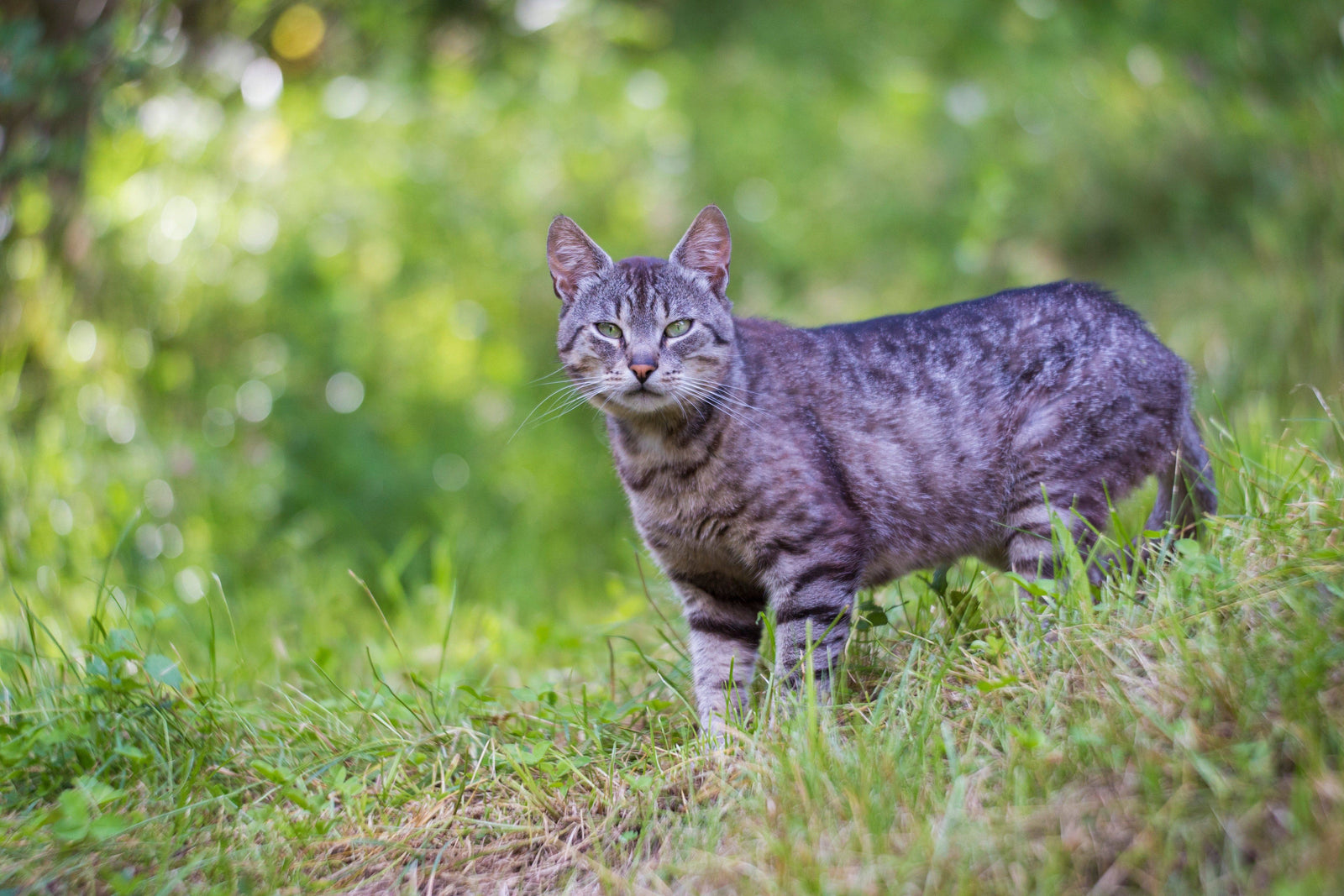
Manx cats come from the Isle of Man, a somewhat independently governed island of the UK. They look like a typical house cat with round eyes, a round head and thick fur in many different patterns - until they turn around that is. The main characteristic of a Manx is the complete lack of a tail. Manx cats are short-haired, but there is a long-haired version, the Cymric. The latter is fully identical to the Manx, except for hair length.
The Lore of the Manx
Those with a scientific mind would agree Manx cats lost their tail due to a genetic mutation caused by inbreeding. However, there are other legends that suggest otherwise. Religious folks may believe they were late getting to Noah's Ark and the door got shut on their tails. In another myth, Vikings would take the kittens for good luck (everyone loves kittens, let's be honest.) As a deterrent, the fable suggests mother cats bit off the tails of their babies to make them less desirable. Other lore suggests that Manx cats have some help from magical "little people" to perform sneaky tasks.
Manx Personalities

The Manx cat is a spunky type who can get into just about anything. They often learn to open cabinets to find whatever it is they are looking for - usually treats. They are also quite loving and make great family cats. Some say a Manx has a personality more similar to a typical dog than a cat - loyal, playful and interactive with their owner or family. They love to stay warm in your lap and cuddle for long periods of time. They get along well with children and other animals. Manx are excellent hunters and are a great help on farms and ships to help with pests - tail or no.
Physical Characteristics: A Manx With a Tail?

The "rumpy" cat can actually have a full tail, a partial tail or no tail. However, only tailless or nearly tailless cats can present in a cat show as an official representative of the breed. Otherwise, they are sturdy cats with powerful back legs that help them to run after prey in energetic bursts and jump high. They can have almost any pattern and color common for a house cat including tabby, single and bi-color.
Since Manx are short-haired, grooming is easy. Just brush them and trim their claws about once a week, and use vet approved toothpaste for a tooth care regimen.
Health Issues to Watch For

Some might consider a cat without a tail to be worse off than other breeds, but the Manx does just fine. They have no problems balancing in general. However, when buying from a breeder, beware of tailless kittens that have may more serious neurological problems. Signs include trouble walking, and problems going to the bathroom. When buying from a breeder, be sure to get a guarantee of health in writing because purebred Manx cats can have issues that don't show up until 4-6 months of age.
Manx cats are also prone to overeating and obesity. To avoid this, keep your kitty on a healthy diet and watch their weight so they can have a long and healthy life.
Manx cats are like a classic house cat with a twist. Their lack of a tail makes their charming personalities that much more lovable. They are perfect as a family pet who will be just as loyal as Fido, and have the additional talent of hunting pests around the house or farm.


Follow Us